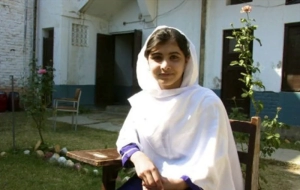Published in The News, October 2012
What is the real, existential cause for concern – the imagined enemy, or a real, functional terror network in the shape of the TTP?
The renewed attacks of the Tehrik-e-Taliban Pakistan (TTP) across the country indicate the exasperation of this anti-state network trying to re-assert its strength in the face of Pakistan Army’s operations as well as the drone strikes by the U.S., which have now turned into a major political plank for most political parties.
The illegal drone strikes have targeted Al Qaeda leadership as well as the TTP stalwarts, leading to the dispersal of militants’ leadership and the relocation of Al Qaeda, reportedly to several urban centers of Pakistan.
The ‘popular’ Imran Khan led his march to Waziristan (without being able to set foot in the tribal agency) and created a kind-of media consensus that Pakistan needed to pull out of ‘America’s war’ and make peace with the Taliban or, more fantastically, enable the threatened tribals to take on the Taliban themselves.
This fanciful and simplistic narrative omitted a vital segment of reality: the TTP is pitted not just against the United States’ ‘imperial designs’ – it also considers the state of Pakistan as its enemy. These Kharijites of the 21st century use religious appeal to justify and rationalise extremely violent and barbaric acts, and consider the existence of pluralism within the fold of Islam as an anathema. They consider women’s education to be un-Islamic and consider a constitutional democracy as an infidel imposition on the faithful.
Unlike other insurgent groups in Pakistan, TTP wants to demolish the state of Pakistan and its constitutional basis in line with Al Qaeda ideology. Readers doubtful of this polemic should refer to Al Zawahiri’s famous treatise called “The Morning And The Lamp”, freely available on the Internet. If they are further interested, they could refer to any bookshop where such materials are widely available. This is how we have allowed anti-state doctrines to penetrate our public life.

The most brazen act of targeting a 14-year old girl, Malala Yousafzai, immediately after Khan’s march came as a game-changer. The ‘public opinion’ shaped by Taliban apologists faced the biggest jolt, the biggest after Benazir Bhutto’s assassination in 2007. Even the conservative and religious sections of Pakistani society could not help condemn this barbarity, and for a day or two, it appeared as if there was a major consensus emerging in the country that put homegrown terrorist networks such as TTP before the imagined enemies such as India or the United States.
However, this consensus was breached by the usual suspects such as the Jamaat-e-Islami, which termed the Taliban as their brothers, obfuscating the real issue of a girl child not being allowed to go to school. The JI also went ahead and, on various social media platforms, released pictures of Malala and her father meeting the late Richard Holbrooke, thereby suggesting that Malala’s family were CIA agents and ‘legitimate targets’ of the TTP. This came as a shocking reminder to the country on the lack of clarity and deliberate confusion spread by the apologists for brutal groups such as the Taliban.
The second source of public confusion came through none other than once-a-Westernized-liberal-
Imran Khan’s shocking positions may well be cynical political ploys to gain power in the coming years by positioning the issue of Taliban in a traditional ‘strategic depth’ framework that views the Taliban as pro-Pakistan assets capable of establishing a Pakistan-friendly government in Kabul. No one has commented on this situation better than my friend Feisal Naqvi in his brutally honest article (entitled ‘Shame on you Mr. Khan’):
“Distinguishing between the TTP and the Afghan Talibs is not the same as saying that drone attacks are justified: that is an entirely different debate…And if you, Mr Khan, cannot understand that logic, then you are unfit to lead this country.”
The third source of confusion and evident cowardice came from the ruling parties and the Pakistan Muslim League-Nawaz, who shed many a tear on Malala’s plight but refused to name the TTP out of fear as well as political expediency, given that nobody wants to cede any ground to the Taliban-savvy Imran Khan.
The Chairperson of the Pakistan People’s Party, Bilawal Bhutto Zardari, was brave enough to name the TTP and also reminded everyone that this mindset was responsible for the assassination of Benazir Bhutto. He, however, gave this statement from a position of comfort and relative insularity, sitting in London and not directly responsible for Pakistan’s governance.
The same could be said of Muttahida Qaumi Movement’s exiled leader Altaf Hussain, who perhaps gave the boldest statement in the case of Malala Yousafzai, the butchery of TTP, and the unprecedented rise of extremism and its widespread acceptance, even among the educated segments of Pakistan. Nevertheless, it needs to be recognised that Altaf bhai’s statement was aired in Karachi amidst thousands of people, and the MQM has emerged as a bulwark of resistance against bigotry and extremism.
The MQM realises that its support base, i.e., the middle classes, women, and upwardly-mobile social classes, will not accept TTP’s vision for Pakistan. This is why Altaf Hussain has been repeatedly citing Mr. Jinnah’s August 11 speech. The clearest denunciation of the attack on Malala came in these words:
“Malala Yousufzai is the symbol of knowledge which the Taliban want to suppress. The cowardly attack on Malala and her classmates was the attack on Islam, the teachings of the Holy Prophet (PBUH), and the humanity.”
More importantly, Mr Hussain asked Pakistanis if they wanted Pakistan to survive and progress, or if they would allow it to be wiped out from the map of the world. To save the country, he added, the entire nation would have to rise against these heartless killers. “We have to decide if we want a Pakistan of Quaid-i-Azam Muhammad Ali Jinnah or we want a Pakistan of the Taliban. You are either with the Taliban or you are against them. There is no third option.”
Altaf Hussain, in his address last week, also challenged the religious scholars who were reticent when condemning the Taliban’s dastardly acts. As he rightly pointed out, the lines were clearly drawn in today’s Pakistan. Referring to the slain Governor of the Punjab, Salmaan Taseer, Mr Hussain reminded that no cleric was ready to lead his funeral prayers. When the killer Mumtaz Qadri was presented in a court, a group of lawyers had showered flower petals on him. For the first time, a politician questioned the Chief Justice’s silence and inaction against his ‘constituency’ – the lawyers – who celebrated Qadri’s ghastly act.
The truth is that the Pakistani state remains hostage to its own ideological confusion, grown out of its policy of adopting extremism as a hedge against India. While this paradigm is currently being shifted by affecting a thaw with the traditional enemy, Pakistani society itself is now a victim of the misplaced emphasis on using proxies to wage a low-intensity yet lethal battle against India.
The abovementioned ideological confusion is further compounded by state incapacity to tackle extremism and guerrilla groups such as the TTP and its affiliates across the country. A critical factor impacting the fight against terrorism is the inability of the Pakistani state to reform its police force. Built around a 19th century framework, the police is understaffed, undertrained, and lacks a coherent approach to counter terrorism.
A recent study by the Asia Society entitled, ‘Stabilizing Pakistan Through Police Reform’ argues that the agility of criminal networks and terrorist organisations has rendered the Pakistani police force incapable to fulfil its functions. This report also highlights how insufficient and outmoded equipment, lack of merit in recruitment, and overall resource constraint, is a crisis of Pakistani state.
In a similar fashion, prosecution services across the country are unable to keep pace with the sophisticated investigation and preparation of cases for the courts, which adjudicate on instances of terrorism. This is why nearly 95pc of terrorists are acquitted from Pakistani courts. Insecure judges are unwilling to risk their lives as they face powerful groups operating with impunity, and often with tacit support of elements within the intelligence apparatus.
The Lal Masjid case was a national epitome of this syndrome; where a children’s library, illegal occupied, was turned into a terrorist nursery, and despite the military operation under General Musharraf, the ideological confusion permeating media organisations delegitimized its results.
Today, the Supreme Court of Pakistan, the executive authorities, and the country’s well-known tycoon, Malik Riaz, have all joined hands to rehabilitate the Lal Masjid, and have gone to the extent of providing land and shelter to the violent activists of the Lal Masjid. When a state capitulates in such a manner, Malalas of Pakistan will continue to remain unsafe and vulnerable to terrorist attacks.
A three-pronged approach is desperately needed. First is to unite on the issue on terrorism and identify the common enemy. The recent division on the North Waziristan operation is dangerous and shows how all parties treat anti-Americanism as an electoral goldmine. Second, the capacity of civilian institutions to fight terror remains an unattended issue. More investments are required on an emergency basis.
Lastly, the Pakistan military will have to reassess its ‘threat perception’. What is the real, existential cause for concern – the imagined enemy, or a real, functional terror network in the shape of the TTP? Let’s hope that Gen Kayani’s August 14 speech and the recent ISPR statement on Malala are indicators of a shifting policy.
The writer is Director, Jinnah Institute, Islamabad. The views expressed are his own. His writings are archived at www.razarumi.com. Follow him on Twitter: @razarumi



